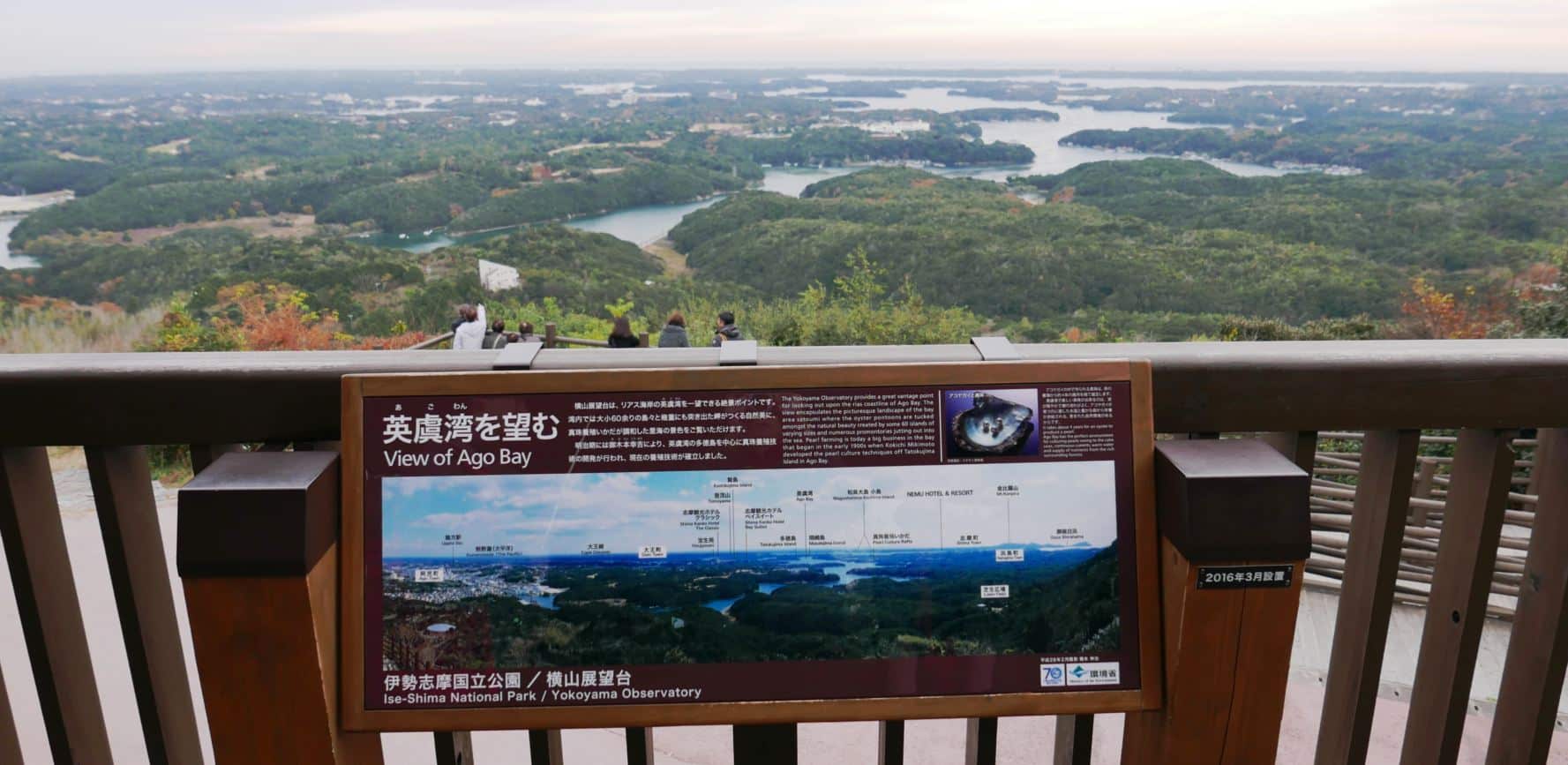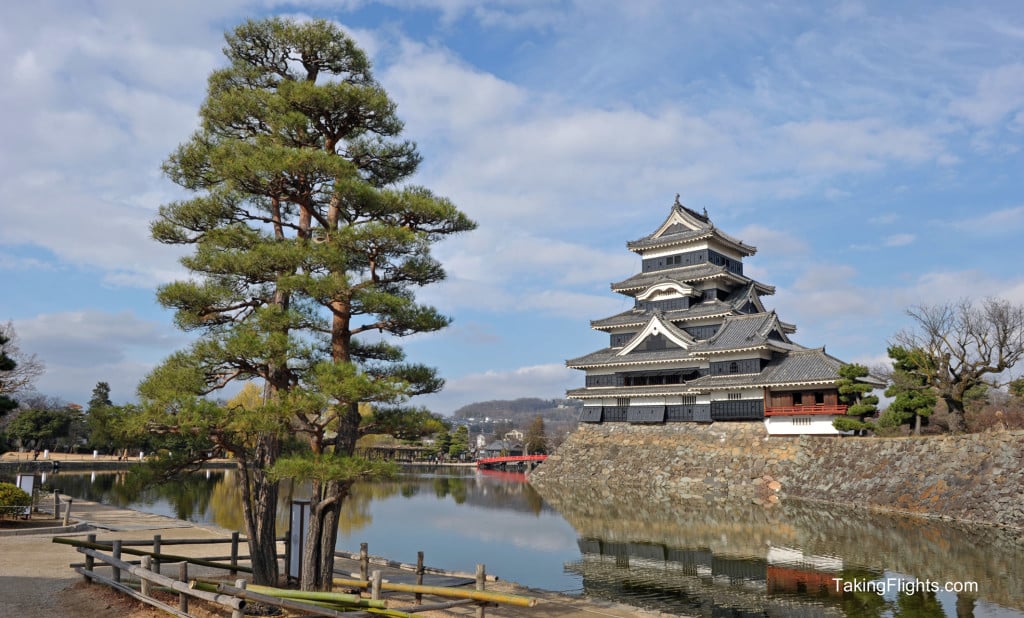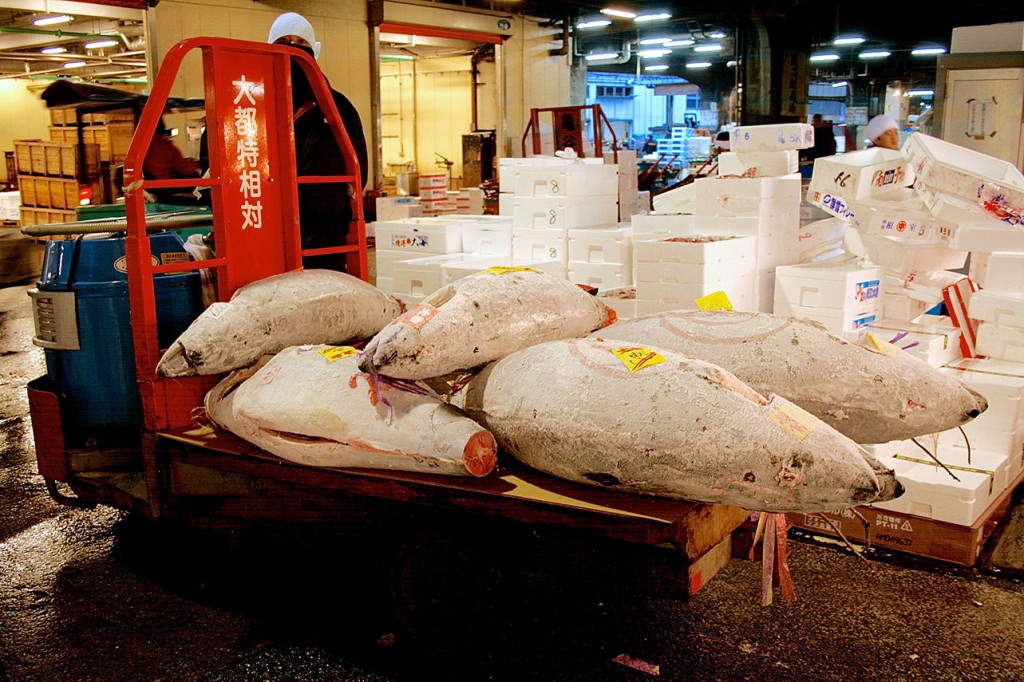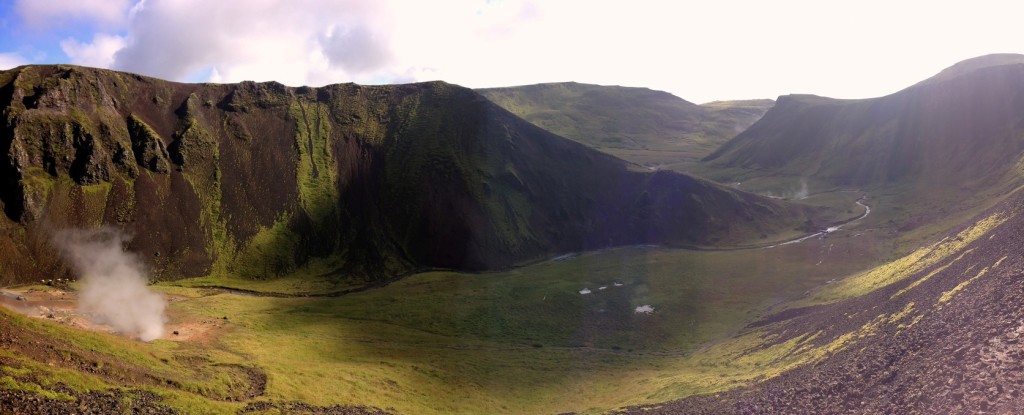11 Dec 2016: Flight SQ672 landed at Nagoya’s Chubu Centrair International Airport at 0835 hrs, a few minutes earlier than scheduled. Collected the portable Wi-Fi router which I prebooked from Wifi-Hire.com (¥6980 for 9 days) from their airport service counter before going down one level to the ToCoo car rental office. This is my 3rd time using ToCoo as they have the most flexible options, easy to book online, responsive customer service, and at prices usually lower than others.
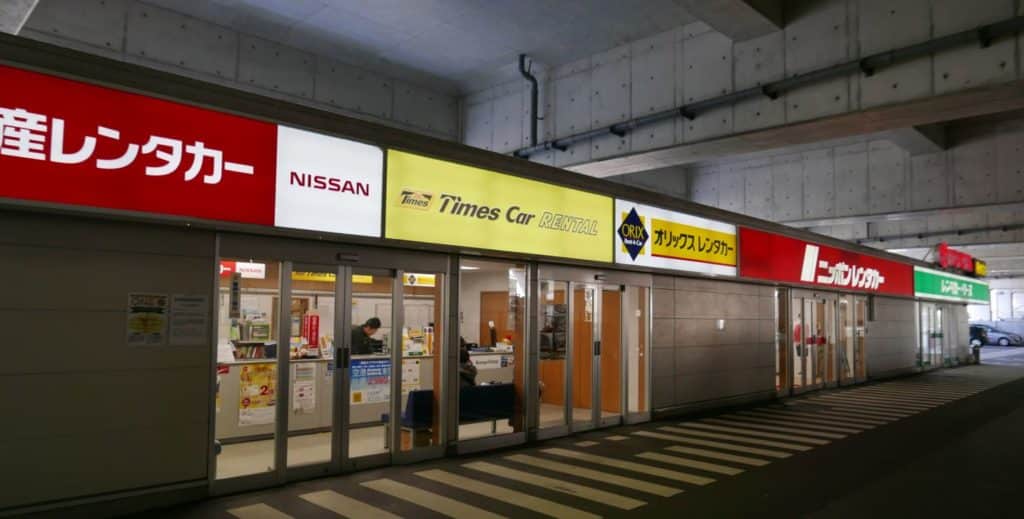

We hired a 7-seater Nissan Serena to accommodate the 5 of us plus luggage. Rental came to ¥97,686 for 9 days inclusive of English GPS and ETC device which is the equivalent of the IU unit in Singapore. The rental for the ETC card is another ¥24. It is highly recommended to rent the ETC unit for ease of driving through highway tolls in Japan.
The 160 km route south of Nagoya took us around the Ise Bay. Not much scenery along the way as most of the journey was along the Higashi-Meihan Expressway. The journey took about 3 hours including an hour’s break at the huge EXPASA rest stop with a modern food court, shopping area and sparkling clean restrooms. It’s a comfortable place to have a hot meal and freshen up. Total toll charges came to ¥3680.
Ise-Shima – Land of Shinto Shrines
The Ise-Shima region (also known as Shima Peninsula (志摩半島, Shima Hantō) is home to Japan’s most sacred Shinto shrines – the Ise Grand Shrines. It was built around the 3rd century and comprises over 125 shrines. The most sacred of these are the Ise Jingu Geku (outer shrine) and the Ise Jingu Naiku (inner shrine). This area has been designated as Ise-Shima National Park for its natural beauty and cultural importance.
It is customary to visit the Geku (outer shrine) first before visiting the Naiku (inner shrine) located 4 km to the south. This is a sprawling 400 hectares ground that took us more than 3 hours to complete. The outer shrine was completed 500 years after the inner shrine. Do allocate more time for the inner shrine as it has a more attractions catered to tourists as well as a deeper history.
Ise Jingu Geku (Outer Shrine)
The Outer Shrine (外宮, Gekū) enshrines Toyouke Omikami, the Shinto deity and guardian of food, housing and clothing. Toyouke provides food for the Sun Goddess, Amaterasu Omikami, who is enshrined at the Inner Shrine. It features an architectural style that is free of other Asian influences. The grounds of the Outer Shrine are a little smaller than the Inner Shrine. (Source: Ise Jingu Official Site)
Gravel-covered walking paths that had been well trodden by pilgrims through the years lead us past the main Torii gate amidst centuries old trees to the inner sanctum of the sacred shrine.
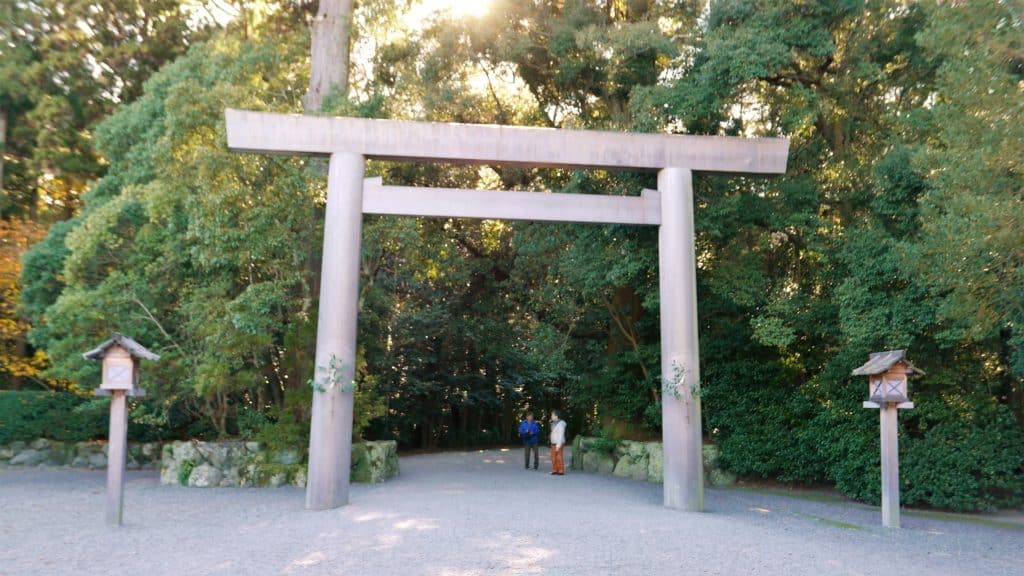
Just beyond the entrance is the Sengukan Museum which is built upon a serene lake. Constructed in 2012 the museum highlights the monumental shrine rebuilding process that occurs once every 20 years. This is part of a Shinto belief of the death and renewal of nature and the impermanence of all things. The museum’s impressive exhibits include a fourth of a 1:1 replica of the Inner Shrine’s main building as well as a 1:20 model of the main sanctuary. The next rebuilding will be in 2033.
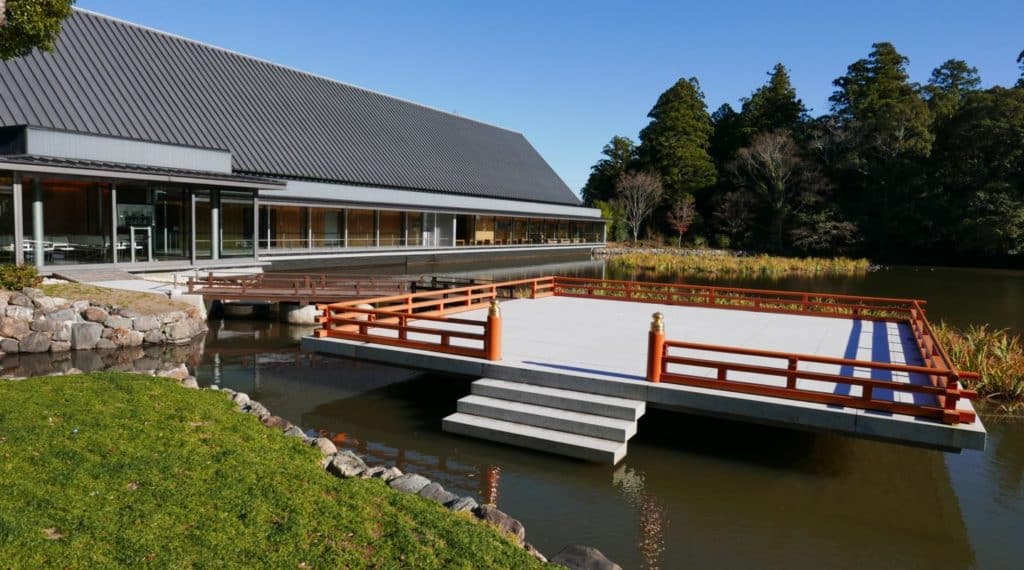
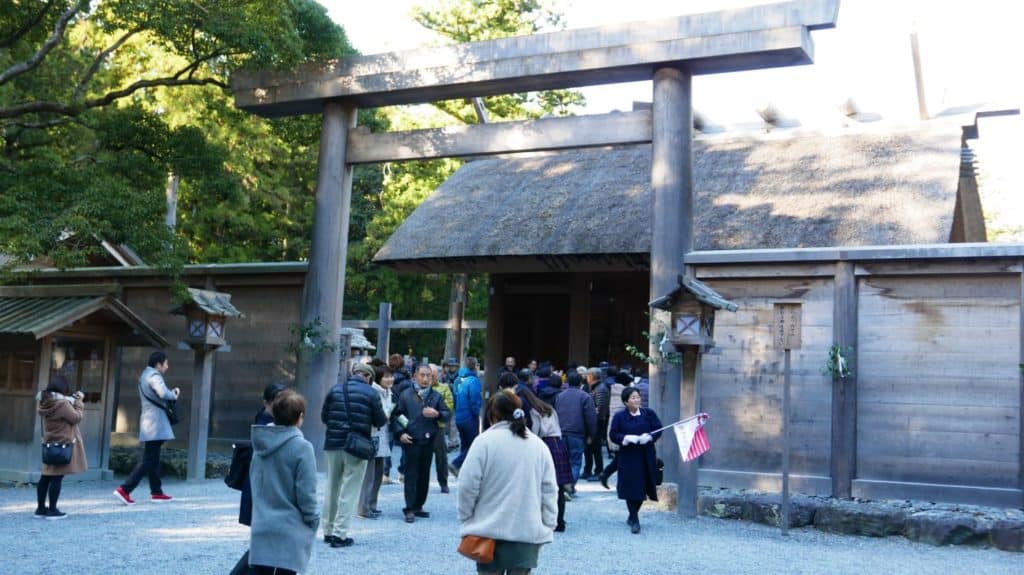
The main sanctuary is past another Torii gate surrounded by rows of fences. Visitors are not allowed to go beyond the outermost sanctuary. The unique feature of the main building is a forked roof (chigi) that are cut vertically at their tips and nine decorative wooden beams (katsuogi). Photography is not allowed beyond the outermost fence.
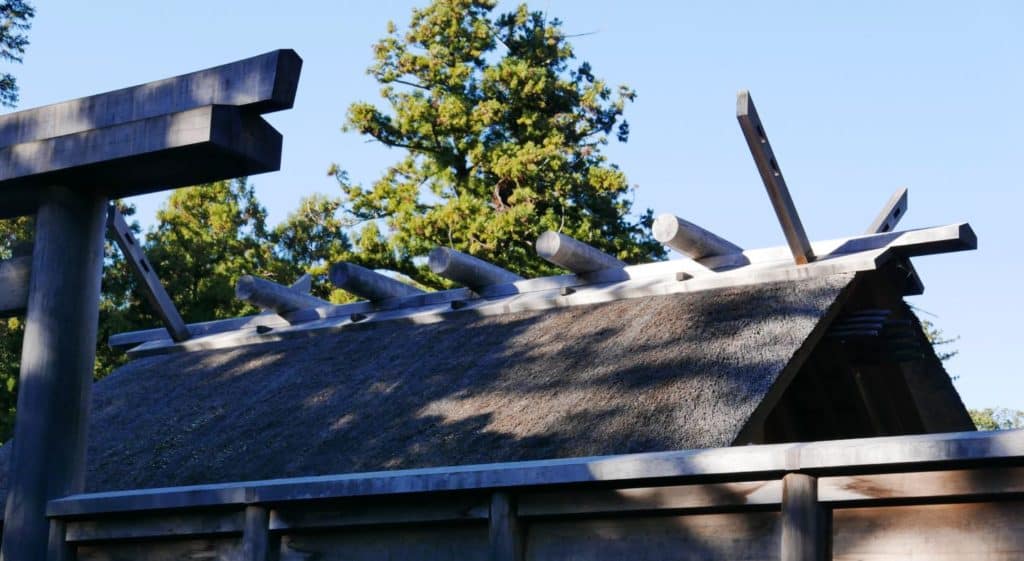
Ise Jingu Naiku (Inner Shrine)
The Naiku (内宮) enshrines the sun goddess Amaterasu. It is held in higher reverence than the outer shrine. This is due to the fact that it is the home of the Sacred Mirror of the Emperor (one of the three imperial regalia). The sacred mirror (Yata no Kagami) was given to the first emperor of Japan by the sun goddess herself. This makes the shrine one of Japan’s most important and holiest sites. (Source: Japan-guide.com)
Like the Geku, the Naiku and the Uji Bridge are rebuilt every 20 years. On crossing the bridge, the path turns to the right along the banks of the Isuzu river and passes through lush landscaped gardens with huge centuries old trees. After passing the Purification Hall (Saikan) and the second Torii gate we arrived at the Kagura-den. This hall is open to the public for the offering of prayers to the kami (a divine being in the Shinto religion).
Kotaijingu, the main shrine of Naiku, is situated up a flight of of large stone steps. Visitors are supposed to keep to the sides of the path as the middle is set aside for the goddess Amaterasu. This etiquette is the same for most Shinto shrines. The actual shrine is hidden behind a large fence and is out of bounds to the public and photography is strictly prohibited in this area.
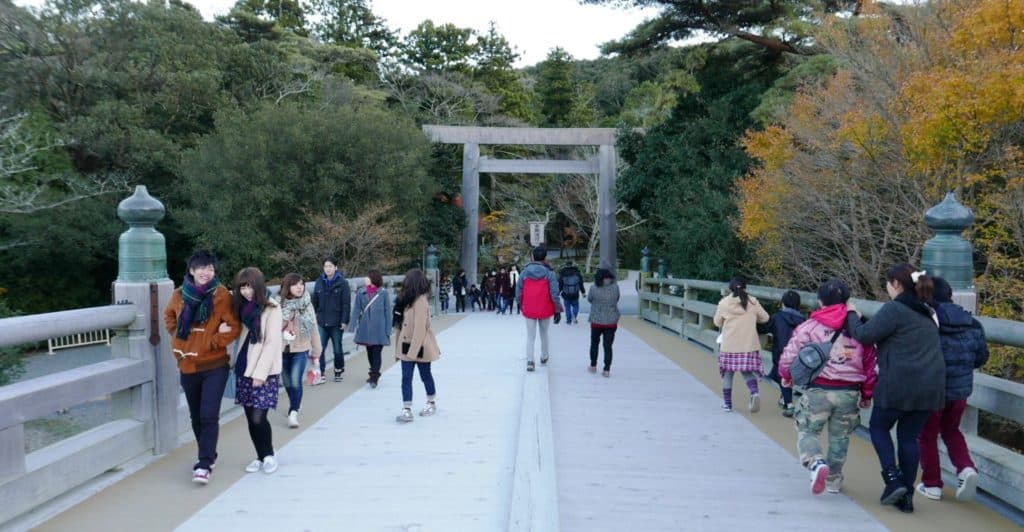
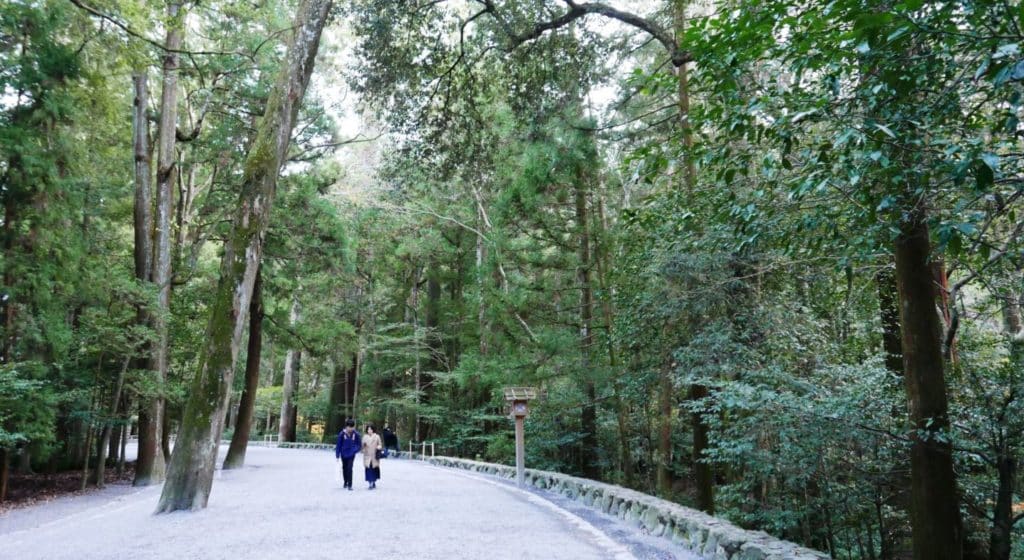
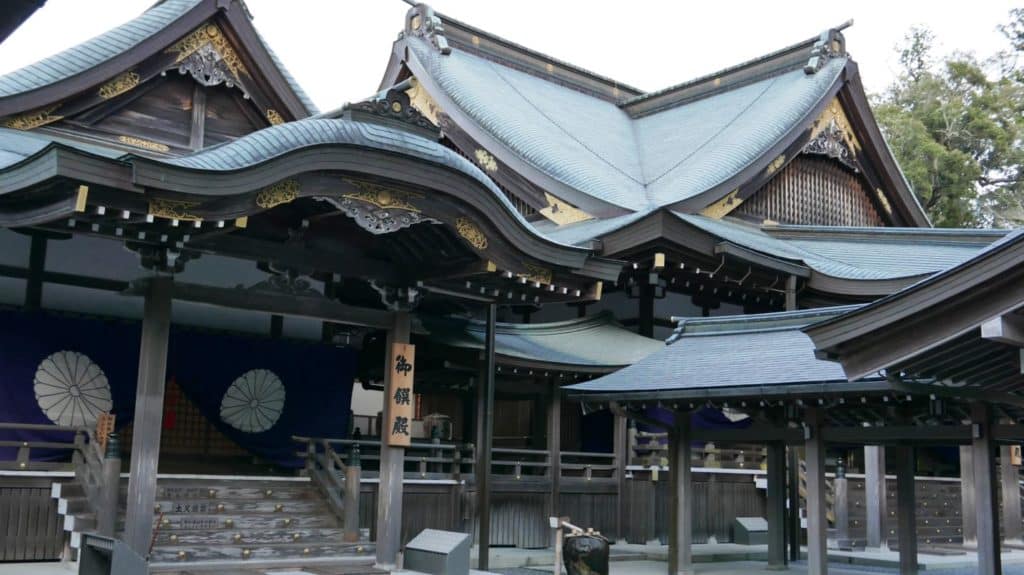
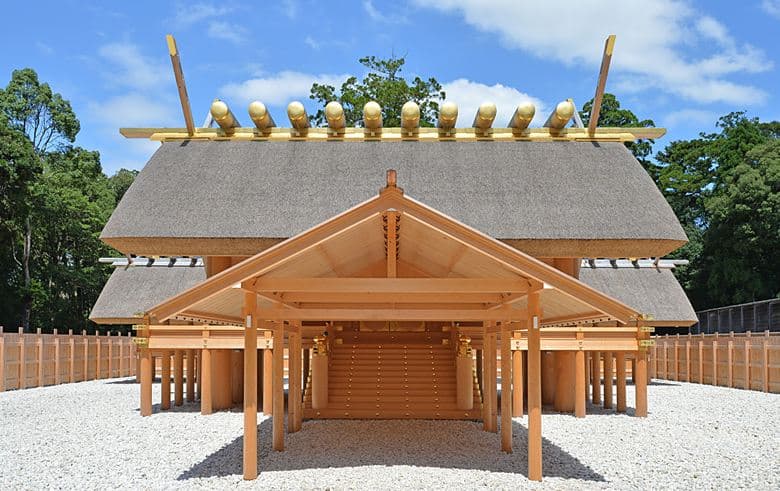
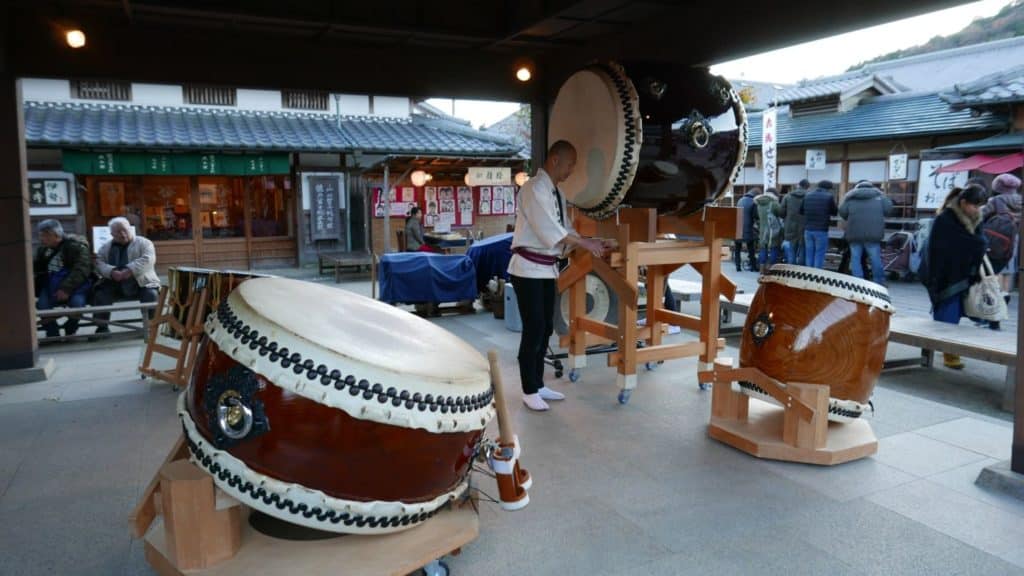
Accommodation
For the next 2 nights we stayed at the Hotel Kintetsu Aquavilla Ise-Shima. Rate was ¥45750 (USD 398) per night inclusive of taxes for a cottage with living room and a twin room on the ground level, and an attic. Comfortable enough for 5. Comes with free wi-fi and breakfast.
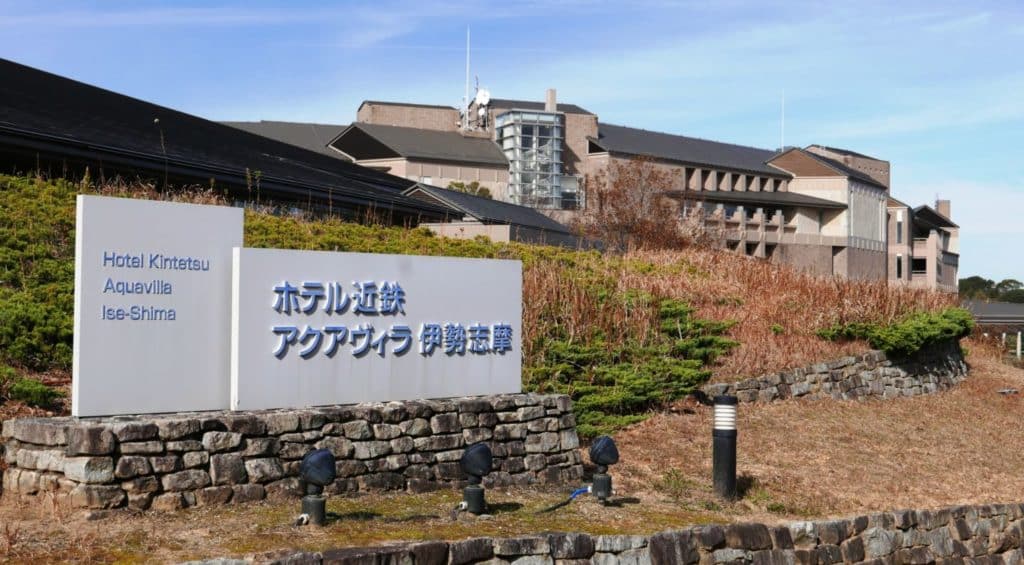
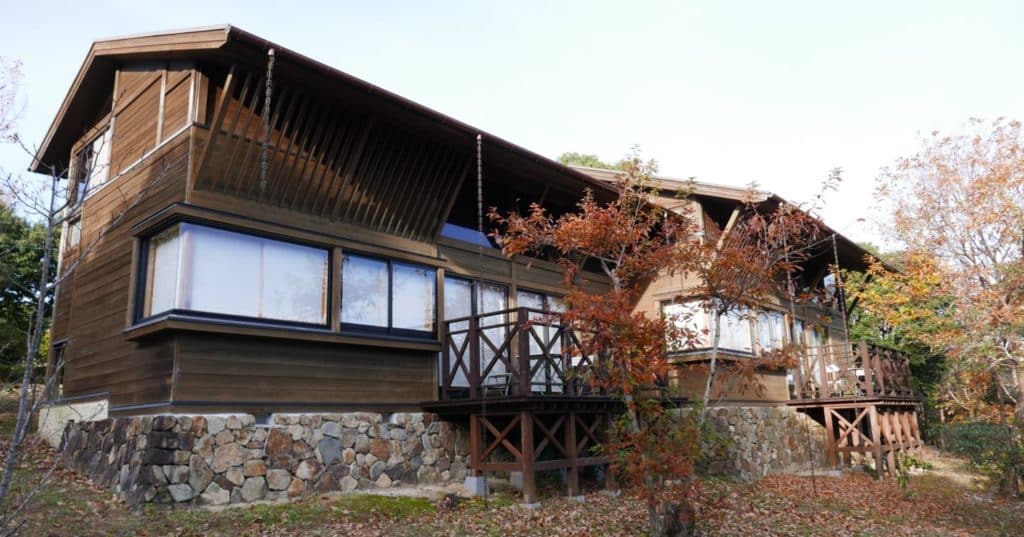
Related Posts:
Day 2: Exploring Ise-Shima and Ago Bay
Day 3: Scenic Drive From Shima to Shingu
Day 4: Paying Homage to the Historic Shrines of Kumano
Day 5: Driving From Shingu to Kyoto via Nara
Day 6: Exploring Arashiyama and Ancient Kyoto
Also read my tips on driving in Japan.
- Dalat | Vietnam Trip Part 3 - May 4, 2023
- Danang, Hoi An, Hue, My Son | Vietnam Trip Part 2 - May 1, 2023
- Ho Chi Minh City, Cu Chi Tunnels & Cao Dai Temple | Vietnam Trip Part 1 - April 30, 2023
